In the dimly lit corner of the shelter, a low growl rumbled from a kennel. Inside, a dog, its fur matted and eyes filled with fear, cowered against the back wall. This was no ordinary resident. This dog, known for its aggressive outbursts, had earned the wary respect of even the most seasoned shelter staff. Fear, a potent cocktail of past trauma and present uncertainty, fueled its every action.

Undeterred by the daunting reputation, a trainer named Sahari, known affectionately as the “chicken nugget trainer,” approached the kennel. Armed with a bag of chicken nuggets and a heart brimming with compassion, she embarked on a mission to bridge the chasm of fear.
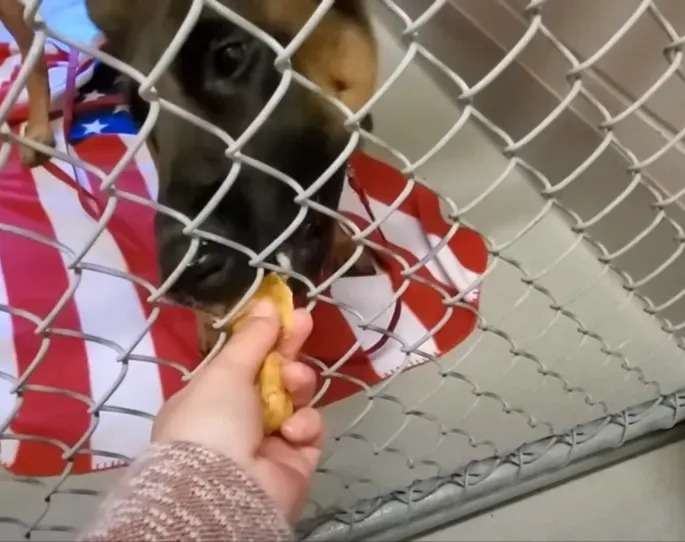
Daily visits became a ritual. Sahari would sit quietly outside the kennel, offering a nugget as a silent peace offering. Initially, the dog’s response was a guttural growl, a warning to stay away. But Sahari persisted, her patience unwavering. Slowly, a shift began to occur. The dog’s growls softened, replaced by a hesitant curiosity. It would inch closer, cautiously accepting the treat, its eyes never leaving the trainer’s face.
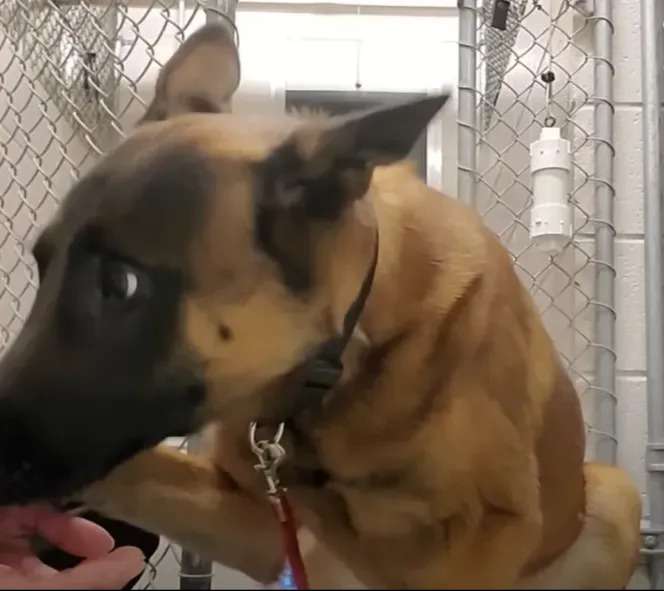
With each passing day, Sahari chipped away at the layers of fear, building a fragile bridge of trust. She observed the dog’s behaviour meticulously, recognizing the telltale signs of fear rather than inherent malice. This crucial insight became the cornerstone of her approach.
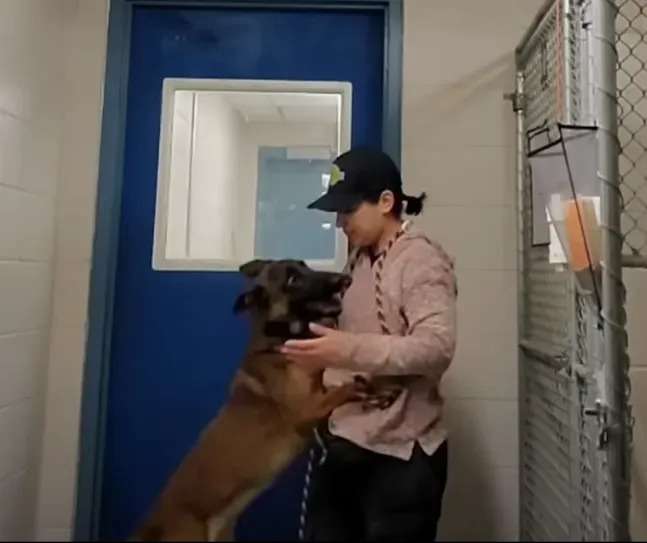
One day, after three days of consistent interaction, a miracle unfolded. The dog, its tail hesitantly wagging, emerged from its kennel. It approached Sahari, a tentative offering of a squeaky toy clutched in its jaws. At that moment, the fear that had imprisoned the dog for so long began to dissipate, replaced by a glimmer of trust.
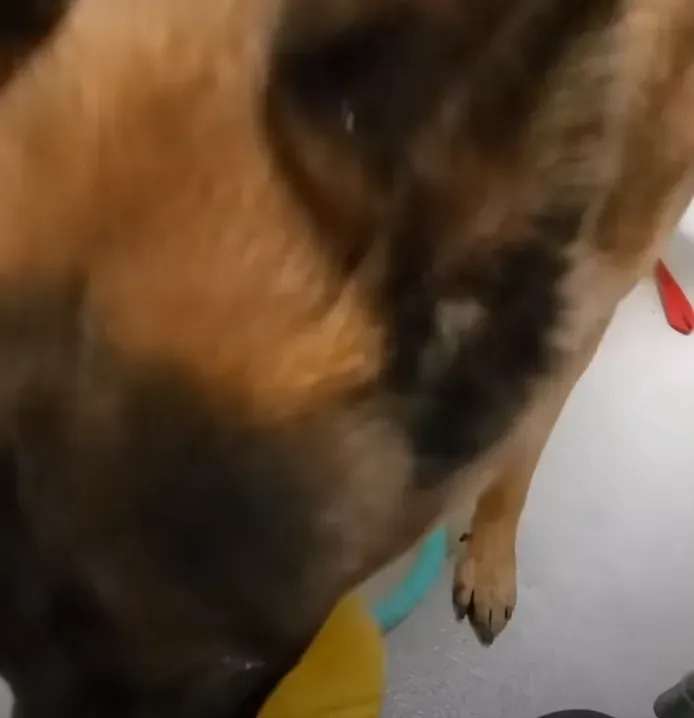
Sahari, along with her fiancé, embraced the dog’s newfound openness. Walks in the park, hikes in the woods, and camping trips became regular occurrences, each outing a testament to the dog’s remarkable progress. The once-aggressive animal blossomed into a playful companion, its fear replaced by a newfound joy for life.
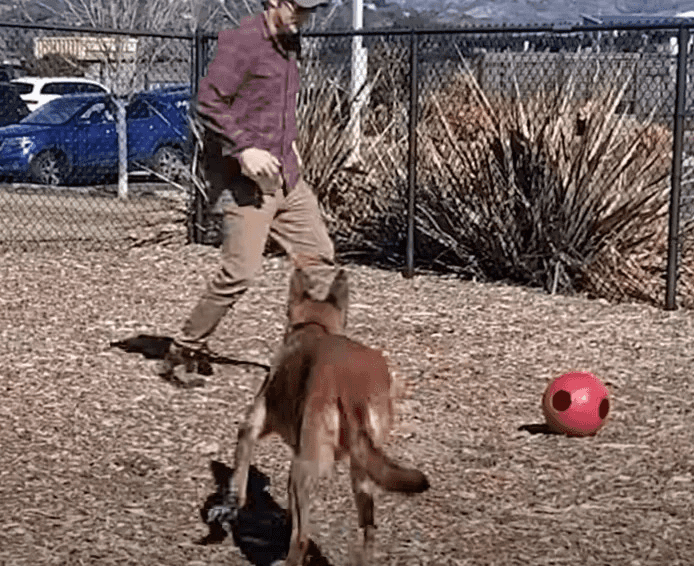
Finding the perfect forever home was the final step in this remarkable journey. A loving family, seeking a furry companion, opened their doors and hearts to the dog. The transition was seamless, a testament to the transformative power of Sahari’s unwavering dedication.
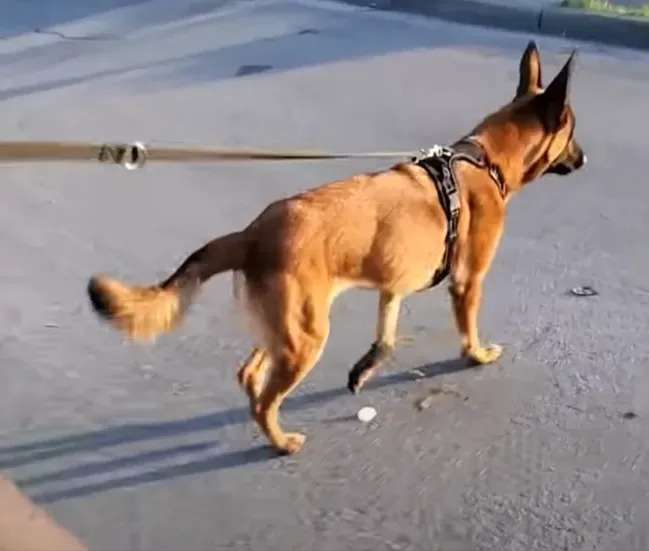
Sahari’s story is a beacon of hope for all who believe in the transformative power of compassion and understanding. It’s a reminder that even the most fearful creatures can blossom into loving companions, given the right opportunity and a gentle hand. And sometimes, all it takes is a bag of chicken nuggets and a heart full of love to unlock the potential that lies hidden within.
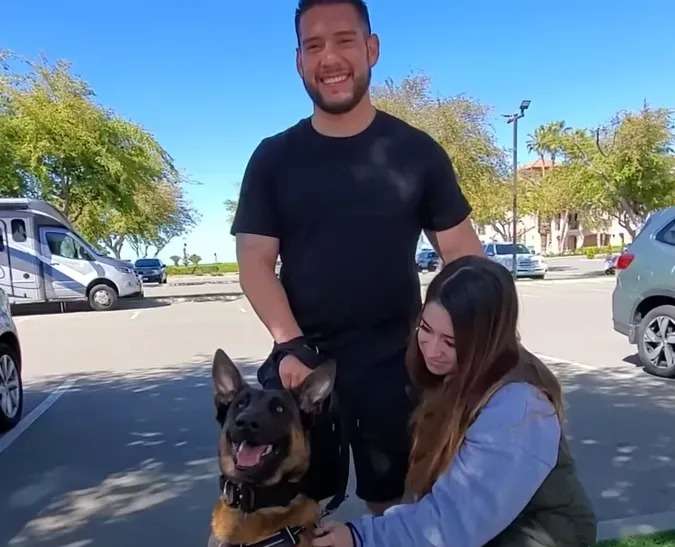
Watch The Full Video Here:
If you’ve ever noticed your furry friend constantly licking everything in sight, you’re not alone. It’s a common behavior among dogs that can leave you wondering what’s going on in their minds. From your favorite sofa to random objects around the house, their licking habits can be both amusing and puzzling. As a seasoned dog trainer, I’ve seen this behavior time and time again, and there’s more to it than meets the eye.
Your dog’s licking spree might seem harmless, but there could be underlying reasons driving this quirky behavior. Understanding why your canine companion engages in this habit can provide valuable insights into their well-being and overall happiness. So, the next time you catch your dog going to town with their tongue, remember, there’s a story behind every lick.
Understanding Your Dog’s Behavior
If your dog’s constantly licking everything, it’s crucial to comprehend why they do so. Understanding your furry friend’s behavior can shed light on their well-being and happiness. Here are some key insights into why your dog might be engaging in this quirky habit:
1. Exploring the Environment:
Your dog uses licking as a way to explore and familiarize themselves with the environment. It’s a sensory experience that helps them gather information about their surroundings.
2. Taste and Smell:
Dogs have a heightened sense of taste and smell. Licking objects allows them to collect scents and flavors, helping them understand their surroundings better.
3. Anxiety and Stress:
Excessive licking can also be a sign of anxiety or stress in dogs. If your dog is feeling anxious, they may resort to licking objects as a coping mechanism.
4. Boredom:
Dogs may lick things out of boredom. It can be a way for them to pass the time or seek attention.
5. Medical Issues:
In some cases, excessive licking could indicate underlying medical issues such as allergies, skin irritation, or gastrointestinal problems. It’s essential to consult your vet if you notice persistent licking behaviour.
Understanding the reasons behind your dog’s excessive licking can help you address any underlying issues and ensure your furry companion stays happy and healthy.
Reasons Behind Excessive Licking
When your dog constantly licks everything in sight, several reasons could be driving this behavior. Here are the primary factors contributing to your furry friend’s excessive licking:
1. Medical Issues
If your dog is licking excessively, it could signal an underlying health problem. Medical conditions such as allergies, skin irritations, infections, or gastrointestinal disorders may lead to increased licking behavior.
2. Anxiety and Stress
Just like humans, dogs may lick excessively when anxious or stressed. Changes in their environment, loud noises, separation anxiety, or unfamiliar situations can trigger stress in dogs, causing them to seek comfort through licking.
3. Boredom and Understimulation
Dogs need mental and physical stimulation to stay happy and healthy. If your dog is not getting enough exercise, playtime, or mental challenges, they may resort to excessive licking as a way to alleviate boredom.
4. Hunger or Nutritional Deficiencies
In some cases, dogs may lick objects excessively due to hunger or nutritional deficiencies. Ensuring your pet is on a balanced diet and has access to sufficient food can help curb this behavior.
5. Behavioral Reasons
Certain behavioral issues, such as compulsive disorder or habit formation, can also lead to excessive licking in dogs. Addressing these underlying behavioral issues through positive reinforcement training or behavioral modification techniques is crucial.
Understanding the reasons behind your dog’s excessive licking is the first step in addressing this behavior and ensuring your furry companion’s well-being. If you notice persistent or concerning licking behavior, consult with your veterinarian for a thorough evaluation and appropriate guidance.
How to Address Excessive Licking
1. Vet Check-Up:
Take your dog to the vet for a thorough examination to rule out any underlying medical issues causing excessive licking. Ensure your furry friend is healthy.
2. Balanced Diet:
Ensure your dog is on a balanced diet with proper nutrition. Lack of essential nutrients can lead to abnormal licking behavior.
3. Mental Stimulation:
Keep your dog mentally stimulated with toys, activities, and regular exercise to prevent boredom, a common cause of excessive licking.
4. Stress Management:
Create a calm environment for your dog to reduce stress and anxiety. Establish routines and provide a safe space for relaxation.
5. Behavioral Training:
Consider behavioral training to address excessive licking. Positive reinforcement techniques can help modify unwanted behavior.
6. Distraction Techniques:
Distract your dog when you notice excessive licking. Redirect their attention with a toy or engaging activity to break the habit.
7. Medical Treatments:
Follow your vet’s advice on potential medical treatments, such as medication or behavioral therapy, to manage underlying issues causing excessive licking.
8. Regular Check-Ins:
Monitor your dog’s licking behavior and make note of any changes. Regularly assess the situation and seek professional help if needed.
Remember, addressing excessive licking requires patience, consistency, and understanding your dog’s needs. Provide love, care, and attention to help your furry friend overcome this behavior.
Preventing Excessive Licking
When it comes to preventing your dog from licking everything excessively, there are several practical steps you can take to help curb this behavior. Here’s how you can address and prevent excessive licking in your furry friend:
1. Regular Vet Check-ups
- Schedule regular check-ups with your vet to ensure your dog’s overall health is in check. Medical issues can sometimes manifest as excessive licking behavior, so it’s essential to rule out any underlying health concerns.
2. Balanced Diet
- Provide your dog with a balanced and nutritious diet to prevent deficiencies that might trigger compulsive licking. Consult with your vet to determine the best diet for your dog’s specific needs.
3. Mental Stimulation
- Engage your dog in mentally stimulating activities to keep their mind active and prevent boredom, which can lead to excessive licking. Interactive toys, puzzle games, and regular playtime can help keep your dog mentally stimulated.
4. Stress Management
- Identify and address sources of stress in your dog’s environment. Implement calming techniques, create a safe space for your dog, and offer reassurance to help manage stress levels and reduce excessive licking behavior.
5. Behavioral Training
- Consider enrolling your dog in obedience training or working with a professional dog trainer to address any underlying behavioral issues contributing to excessive licking. Positive reinforcement techniques can help modify your dog’s behavior effectively.
6. Distraction Techniques
- Provide your dog with alternative outlets for licking behavior by offering chew toys, treats, or interactive games. Redirecting your dog’s attention can help prevent them from obsessively licking objects or surfaces.
- If excessive licking persists despite your efforts, consult with your vet about potential medical treatments or medications that may help manage compulsive licking behavior. Your vet can provide guidance on the most suitable treatment options for your dog.
By implementing these preventative measures, you can help your dog overcome excessive licking and promote their overall well-being. Patience, consistency, and understanding are key to addressing this behavior and ensuring your furry companion leads a happy and healthy life.
Conclusion
Understanding why your dog licks everything is crucial for their well-being. From exploring their environment to signaling medical issues, licking serves various purposes for your furry friend. Factors like anxiety, boredom, and hunger can lead to excessive licking, but there are ways to manage it. Regular vet check-ups, a balanced diet, mental stimulation, stress management, and behavioral training can help address this behavior. By taking proactive steps and seeking professional assistance when needed, you can ensure a happy and healthy life for your beloved pet. Remember, a lick here and there is normal, but if it becomes excessive, it’s time to intervene for your dog’s sake.
Frequently Asked Questions
Why do dogs lick everything?
Dogs lick everything for various reasons, including environmental exploration, stress coping, and medical signaling.
What contributes to excessive licking in dogs?
Medical problems, anxiety, boredom, hunger, and behavioral issues can contribute to excessive licking in dogs.
How can you address your dog’s excessive licking behavior?
You can address your dog’s excessive licking behavior by scheduling vet check-ups, providing a balanced diet, offering mental stimulation, managing stress, implementing behavioral training, and using distraction techniques.
What are some additional steps to prevent excessive licking in dogs?
To prevent excessive licking in dogs, ensure regular vet check-ups, maintain a balanced diet, provide mental stimulation, manage stress, conduct behavioral training, and use distraction techniques.